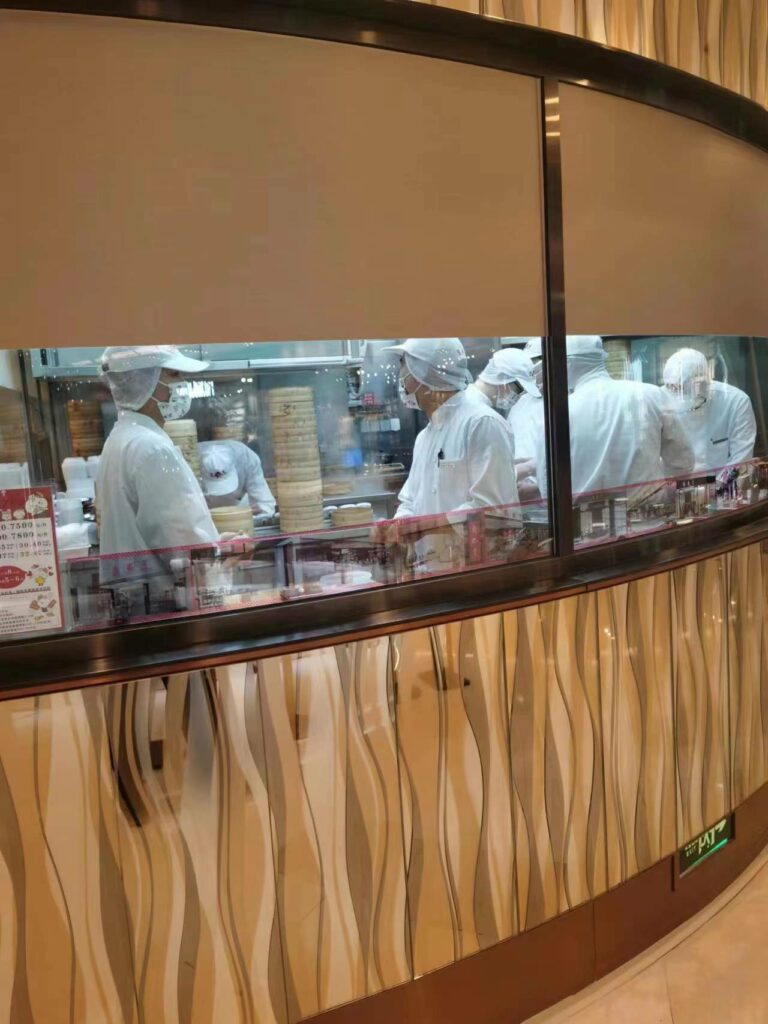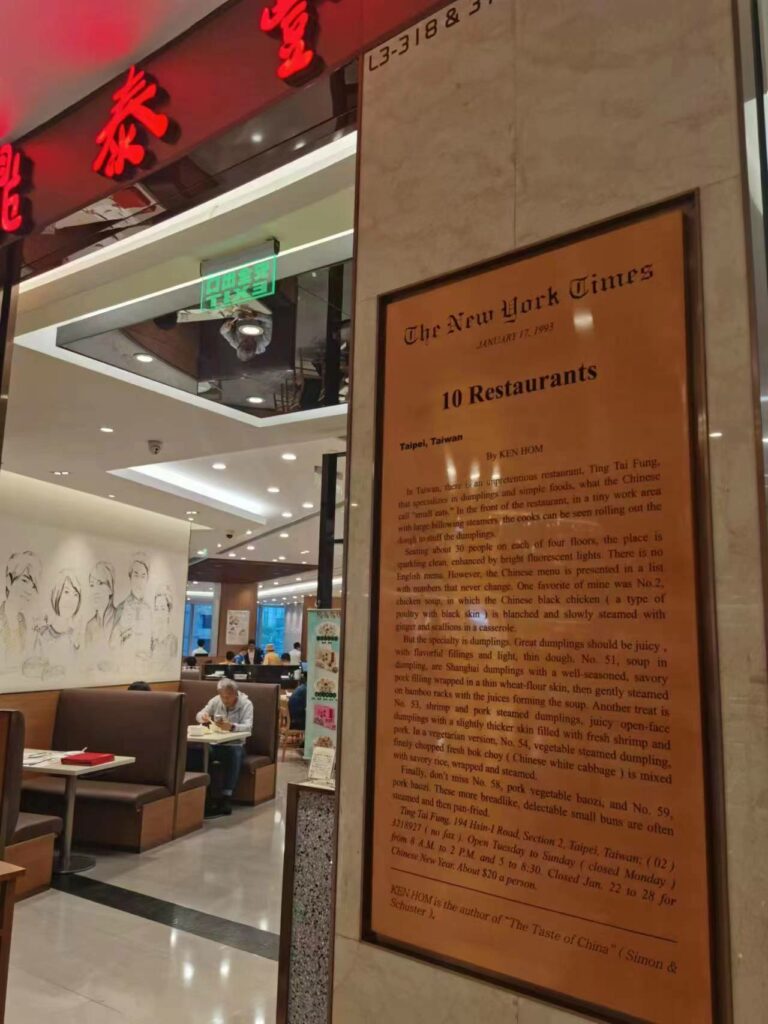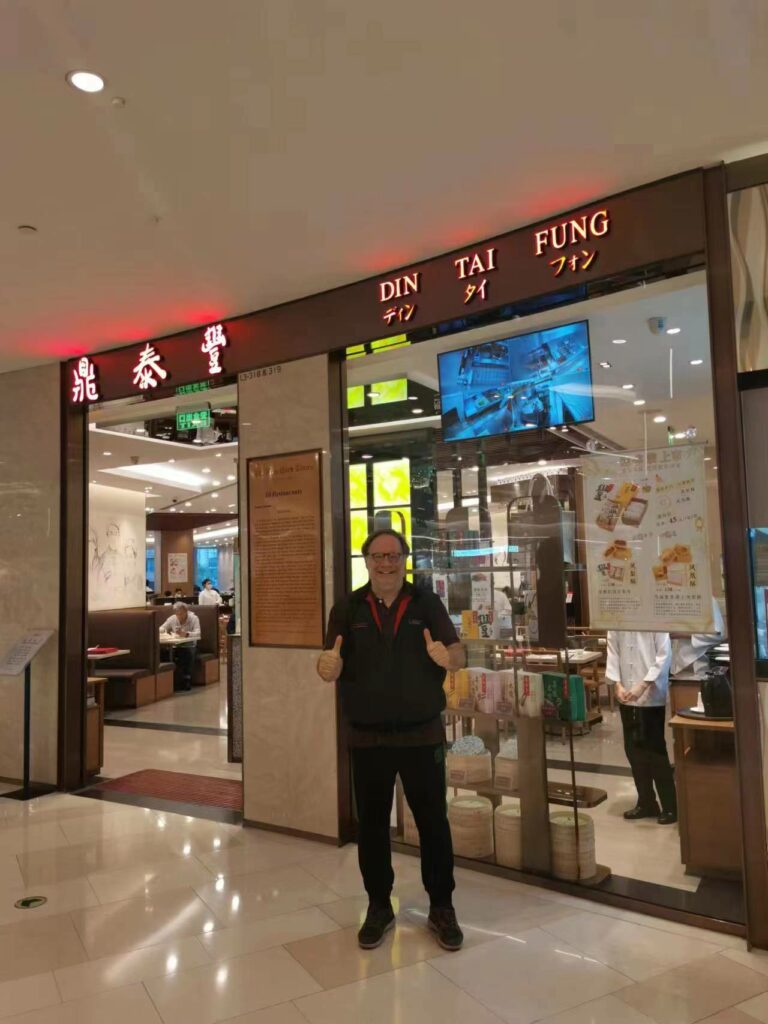To all food lovers in and out of China, Din Tai Fung was much more than a restaurant chain that started out modestly in Taipei only to conquer the world and even a Michelin star: it was a much-loved institution. Famous for its soup dumplings, but not just, Mr. Yang Bing-yi passed away at age 96, the company announced on March 25.

It’s hard to put into words exactly what Din Tai Fung stood for, represented even, for all those with Asian culture and food sensibilities as what he created really was that pervasive and all-important. My own history with the brand began in the most significant of ways: while stricken with high fever and a bad flu-like illness (in happier times before anyone had ever heard of or even knew what Covid was) my Taiwanese girlfriend, in an effort to make me feel better and perhaps recover sooner, took it upon herself to order food from Din Tai Fung. The xiao long bao (soup dumpling), the steamed truffle and pork dumplings, the wontons in red chile oil and other delicacies provided me with a real eye-opening experience and an awakening of sorts. I might have been sick at the time, but not stupid. And, coincidence or not, my health did improve rather quickly after that meal, which I have always liked to think had something to do with my quick recovery.

Yang Bing-yi was born in mainland China’s Shanxi province in 1927, but like many others fled to Taiwan in 1948 as a consequence of civil war erupting in mainland China. There he worked in a small shop called Heng Tai Fung that sold cooking oil. A fellow co-worker, Lai Pen-mei, was to become the love of his life, the pair marrying and ran the cooking oil shop until its closure.
It was then that Yang Bing-yi and his wife Lai Pen-mei opened Din Tai Fung, in 1958. The name was derived from the workplace they had met in (the aforementioned Heng Tai Fung) and their supplier of cooking oil, Din Mei Oils. But as anyone well-versed in Chinese culture knows well, names in China at times/often/always hold not just different but also much deeper meanings, and so it is with Din Tai Fung. In this specific case, the word din (鼎) refers to the wok, the most famous of Chinese cooking pots; the Chinese characters of tai fung mean respectively “safe” or “peace” in the case of tai (or 泰), whereas fung ( 豐 ; or 丰 , in its simplified form) means “plentiful” (or “abundance” or “plump” or “fertile”: which is exactly what the simplified pictogram, a tree or plant with many branches, implies). In fact, the restaurant, which in Chinese characters is written 鼎泰豐, describes itself today as providing a “… peaceful setting for our guests to enjoy an authentic dining experience”.

However, theirs was not a restaurant in the beginning. In fact, it did not become a restaurant until much later. Only in 1972 did the couple decide to turn over half the store to the sale of steamed dumplings, in an effort to counter the poor sales of their peanut oil business that was being pummelled into the ground by the new, convenient, large tins of vegetable oils that had arrived on the scene. They did so on the advice of a friend, a restaurant owner: but being forced to change in life is not always a bad thing. The dumpling business took off, going better than Yang Bing-yi and his wife ever expected, and in short time they converted the enterprise wholly over to making dumplings (and in time other food delicacies too). Though Yang Bing-yi had no formal training in the preparation of dumplings, he and his wife studied and learned; and they obviously did so very well, because the sun has seemingly never set on the restaurant that went from success to success and strength to strength. In the years following their modest beginning, Yang Bing-Yi’s family and heirs have built up what is an extremely successful and much-loved dining empire, with over 170 locations mostly in Taiwan (the original Din Tai Fung was founded there) and mainland China, but also in Australia, Hong Kong (a restaurant there has won a Michelin star numerous times over the years), Indonesia, Japan, Malaysia, the Philippines, Singapore, South Korea, Thailand, the United Arab Emirates, the United Kingdom, and the United States of America. (When Din Tai Fung finally opened its almost immediately wildly successful first branch in the USA -in Arcadia, California- outstanding L.A.Times reviewer S.Irene Virbilia wrote that the place “…defined dumpling frenzy”.) But already in 1993, long before the opening of a branch in the USA, the New York Times had selected Taipei’s Din Tai Fung as one of the top 10 restaurants in the world.

For sure, other factors besides the quality and the deliciousness of its food contributed to Din Tai Fung’s worldwide success: for example, the great cleanliness of all the restaurant branches and the construction of large kitchens open to the public behind large windows, something that is very common in today’s restaurants but not much so in Chinese restaurants (or any restaurants, for that matter) of some decades ago. Yang Bing-yi’s attention to detail was also of paramount importance: for example, he codified the weight that each soup dumpling should be as well as the thickness of the wheat wrapper. (Interestingly, and food for thought if you pardon the pun, this is not unlike what another similar, highly successful food industry visionary and entrepreneur, if on a very different scale, did for the fast food hamburger: much like Yang Bing-yi, Ray Krok of McDonald’s was famous for his implementation of strict standardized procedures concerning portion sizes and food preparation techniques, right down to the size and weight of the beef patty.)
But the importance of Din Tai Fung far transcends its role as a restaurant tout-court: it was trend-setter, a food-battering ram for the cultural transmission of quality, authentic, Taiwanese and Greater Chinese food specialties to the rest of the world at a time when knowledge about, and availability of, authentic mainland Chinese and Taiwanese food amounted to mostly wishful thinking (if for nothing else, because authentic local Chinese and Taiwanese ingredients were once extremely hard to impossible to source in the likes of NYC, Melbourne and Rio).
The xiaolongbao, arguably the one food preparation Din Tai Fung became most renowned for and that it made famous around the world, is but one of the many baozi, small Chinese steamed buns that in this specific case are traditionally prepared in the xiaolong, a small bamboo steaming basket.

There lies the explanation of the xialongbao’s name.
But there lies no need to explain Yang Bing-Yi’s name or who he was.
For everyone knows, and it is only right that it should be just so.

 English
English



